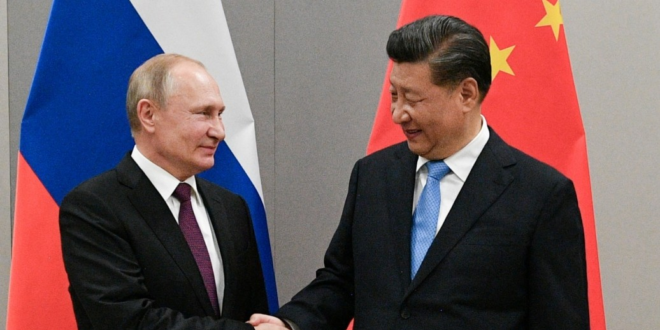Determining Factors, Future Trajectories, Implications for the United States
China and Russia are perceived as major, long-term competitors with the United States. Since 2014, China and Russia have strengthened their relationship, increasing political, military, and economic cooperation. In this report, the authors seek to understand the history of cooperation between Beijing and Moscow, the drivers of and constraints on the relationship, the potential future of cooperation between China and Russia, the impact of the Chinese-Russian relationship on the United States, and implications for future U.S. policy.
The authors find that the main motivations for closer 21st century cooperation between China and Russia are the declining relative power of the United States and the persistent perceived threat from the United States to both China and Russia. If current trends continue, the authors expect the collaborative relationship between China and Russia to be sustained.
Absent major (and likely undesirable) changes in U.S. policy, there is little the U.S. government or Army can do to influence the trajectory of the China-Russia relationship. The U.S. military can prepare for the results of greater Sino-Russian cooperation, including by expecting further diffusion of Chinese and Russian military equipment, additional joint planning and exercises, potential joint basing, and eventually the possibility of joint military operations.
Key Findings
China and Russia are neighbors with a long history: In the past 70 years, their relationship has spanned the full range of interstate relations, from conflict to alliance. After slowly improving their relations since the mid-1980s, China and Russia have become much closer since 2014.
The authors expect that the Sino-Russian relationship will continue to strengthen because of trends in the balance of power and the continuation of U.S. policies that indicate aggressive U.S. intentions to China and Russia.
A desire for independence and divergent political interests will lead China and Russia to avoid the risks that might emerge from closer cooperation, which will prevent them from seamlessly combining their power and more effectively challenging the United States.
Aggregate power and the perceived threat from the United States have consistently been at the heart of the China-Russia relationship. The importance of these two factors is especially clear from 2012 to 2017, when an increase in the perceived threat from the United States spurred Russia to pursue further cooperation with China.
The authors develop a new index of relative power that uses military capacity, economic capacity, and technological capacity and assesses U.S., Chinese, and Russian power from 1997 to 2017. The authors project that China's relative share of power will increase relative to the United States and Russia at least through 2022 and that aggregate Chinese and Russian power will continue to approach, but not exceed, U.S. power through 2022.Recommendations
There is little that the United States can or should do to change the overall trajectory of Sino-Russian relations, given current overall U.S. policy priorities, especially policy toward Russia.
Although the U.S. government cannot easily change the general trajectory of Sino-Russian relations, it can prepare for the impact of potential closer cooperation, especially given a better understanding of how the Chinese-Russian relationship will evolve.
Given the likelihood of continued Chinese-Russian military technical cooperation, the U.S. military must prepare to encounter increasingly sophisticated weapon systems in greater numbers in the inventories of both of its primary strategic competitors.
The potential for Chinese-Russian joint military planning complicates U.S. military calculus and should drive a reevaluation of contingency plans. For example, Chinese-Russian cooperation in a security crisis on the Korean Peninsula is a reasonable possibility and raises the specter of combined efforts to limit U.S. freedom of action in the event of such a crisis.
The potential for enhanced global presence by Chinese and Russian forces enabled by leveraging each other's currently limited extra-regional resources and footprint increases the likelihood of contact and perhaps confrontation with those forces on a global scale. The U.S. military should expect to encounter Chinese and Russian forces during out-of-area or contingency operations on a more regular basis and develop appropriate skills (such as increased numbers of Foreign Area Officers) and protocols to engage with them on a hopefully nonconfrontational basis. Eurasia Press & News
Eurasia Press & News



